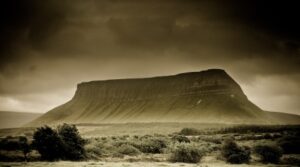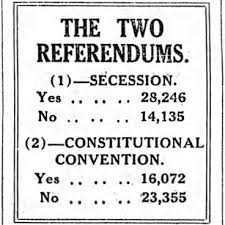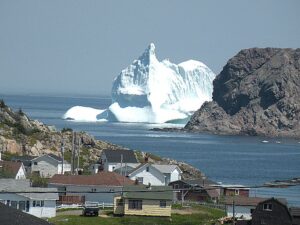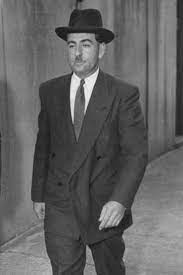I am not a very good gardener. I once killed the grass on the terrace with what I thought was loving care when I overused the fertiliser. The aim when we moved into our house over 30 years ago was to remove the weeds which dominated the garden, and it took about 20 years for the last of the wisteria to go, but asthma weed has defiantly resisted all efforts. There was the vain aim to install a Port Jackson garden, which would have only plants which may have been there at the time Arthur Philip landed at Farm Cove in 1788. The pittosporum, the blueberry ash and the lilli pilli, together with some of the native grasses survive. Anyway there was never a true Port Jackson Garden because of resistance by one party to remove the gracefully gnarled exotic frangipani – the survival of which in the end negated that proposal.
I do not have the patience nor the leisured and measured existence to enjoy one anyway. In many ways I envy the apparently sybaritic existence of the author’s “Elizabeth and her German Garden”. Elizabeth Von Antrim, a cousin of Katherine Mansfield, was born in Sydney in 1866. Both were Beauchamps, and Elizabeth only lived in Australia for her first three years before leaving, never to return.
This book recounts her life married to a Prussian aristocrat 15 years her senior, whom she describes throughout as the Man of Wrath. They lived on a vast Pomeranian property in what is now Poland. There she bred five children and found satisfaction with organising the garden in this vast property. Her tussle with the gardeners reflects her observation that women were considered inferior, particularly among the workers, and where the women were also often subject to violence. These observations counterpoint the description of her careful design of her plantings and the descriptions of her results. One of these was a bed where plants in every shade of yellow from the fieriest orange to the palest yellow were represented. The book was a spectacular success on publication, having 21 reprints in the first year.

Her insight is that interest in gardening makes for a satisfied society. The promotion of gardening has, at times, been subject to controversy, but the very best of presenters induce a hard-to-explain serenity; and yet so much of the content is repetition – the vegetable garden, the horizontal wall, the internal garden, the obsessional manicured country garden, build your own hen house, and so on.
Yet as you drive through the newer suburbs of our cities today, the houses consume the whole block with a few pebbles strewn around with a few forlorn plants, labelled drought tolerant. I have named these suburbs “testudines”. In Latin, this means “tortoises”. The word was also used to describe the layered way the Roman legion infantry went into battles with the shields interlocked above their heads. Our modern suburban rooflines seem to be aligned in a manner reminiscent, swathes of grey seen from above. Barely is there any green in these suburbs except thin green verges with the despondent saplings left to their own devices to shrivel in the summer heat with minimal attention. The sunburnt country… need I recite more.
And as for Elizabeth and her German Garden, gardening is a such a telling metaphor – a brilliant insight.
“Nature has Given me Love”
Adriana Elisabeth Hoffmann Jacoby has died.
Who? You may ask.
She was somebody special – a Chilean cog in the wheel of climate activists.
As the Boston Globe noted: The presence of two Chilean Cabinet ministers at her funeral made clear the importance of her legacy to the country, where scientists-turned-politicians are helping to make a new constitution shaped by the climate crisis.
Above in the title are her last words recorded.
The Boston Globe went onto say that: “she was born in Santiago on Jan. 29, 1940, the daughter of a renowned Chilean doctor and scientist, Franz Hoffmann, and pioneering psychiatrist and spiritual guide Lola Hoffmann (born Helena Jacoby). Ms. Hoffmann went on to study agronomy at the University of Chile before dropping out. She later switched to studying botany when she spent some time in Germany with her mother.
She credited her parents with nurturing her love for nature. “I have pictures of myself, very little, always with flowers and plants,” she said.
In the early 1990s, she met Douglas Tompkins, a conservationist and the founder of the North Face and Esprit clothing brands, and his wife, Kristine Tompkins, who together bought about 1 million acres of Chile’s forests to protect them.
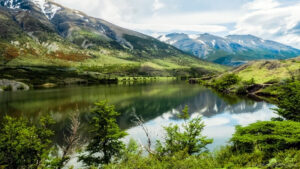
Ms. Hoffmann advised and supported the Tompkins’ conservation efforts, Kristine Tompkins said in a phone interview, and once joined other conservationists in obtaining the couple’s help in preserving a vast stretch of precious but threatened land on the border of Chile and Argentina. In 2014, the area became the mountainous Yendegaia National Park.”
This National Park lies in the very southern end of the country on Tierra del Fuego, but Chile is a ribbon which winds its way along the Pacific Coast of South America from ice to desert; it was a perfect site for this determined botanist to work.
In 1992, two years after the fall of Pinochet, she headed a non-profit organisation, Defensores del Bosque Chileno, dedicated to protecting Chile’s native forests documenting how Chile’s extractive industries were destroying the country’s forests.
Her activism was seen by many as an attack on economic development, especially in a country whose economy heavily depended on exporting commodities.
In 1993 Chile created the Comisión Nacional del Medio Ambiente (Conama) an agency that would later profoundly change her life and legacy.
In a way, in the reflections on this great activist botanist, I find it ironic that Chile inherited Easter Island where religion, manifest in the construction of the moai, led to extreme deforestation with the destruction of three species of trees which grew to 15 metres or more, including the Chilean tree palm, often thought to be the largest palm tree at the time. It is difficult now to conceive of Easter Island in 1022 as an island as thickly forested as Lord Howe Island is today with, in both cases, their distinctive palms and accompanying fauna and flora.
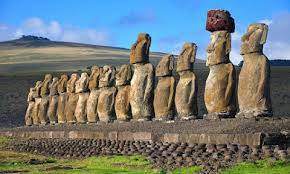
Fast forward 300 years and Lord Howe lies deforested because climate change and now, cut off by rising seas, the population are searching for deities, imploring them to reverse the calamity. The Lord Howe islanders have cut down all their palms and replaced them with basalt figures of Malcom Fraser and Shane Warne to attempt to appease the Gods.
As my companion said, even such a great botanist as Jacoby was unable to recreate the old Easter Island. Maybe nobody would want to do it anyway. The man made figures are such an attraction, more so than any palm trees, however tall they grow – whether we like it or not.
Finland
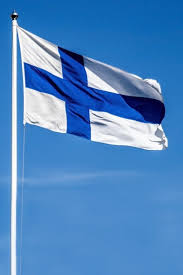
Finland, behold, thy daylight now is dawning,
the threat of night has now been driven away.
The skylark calls across the light of morning,
the blue of heaven lets it have its way,
and now the day the powers of night is scorning: thy daylight dawns,
O Finland of ours!
Finland, arise, and raise towards the highest
thy head now crowned with mighty memory.
Finland, arise, for to the world thou criest
that thou hast thrown off thy slavery,
beneath oppression´s yoke thou never liest.
Thy mornings come,
O Finland of ours!
Jean Sibelius is one of my favourite composers. Finlandia, composed by him while Finland was under Russian rule as the Grand Duchy of Finland, has become a hymn to Finland independence. A group of Finns in the early part of the Russo-Ukraine War sang it in front of the Russian embassy, changing “Finland” to “Ukraine.”
The Finns have lived in the shadow of Russians. The country survived the 1939-44 conflict with Russia, having put up strong resistance, but diminished in size while forced to pay reparations. Thus it was very wary of offending the Russians in the years following. Yet Finland recovered sufficiently to successfully hold the 1952 Olympic games and its 72 metre tower stands as memorial to the superb architectural design of Yrjö Lorenzo Lindegren, who had worked closely within this Finnish functionalist school which included Alvar Aalto, who inter alia defined the architecture of the modern hospital.
The Finns are impatient with fripperies; yet they are creative and hardy – especially important when you live next to Russia and the beautiful summer is lost in harsh winters.
I remember the Finnish lecturer in Semitic Studies who met his smaller professor coming up a narrow set of stairs. There was no standing aside. The Finnish lecturer picked the professor up, swivelled and placed him on a higher stair tread. Efficient, unorthodox, and without a word the Finnish lecturer proceeded down the stairs into the street.
I have been to Finland several times and recently mentioned in my blog my pilgrimage to Turku where John Landy broke the world mile record in 1954.
We have taken the Finnish train to Saint Petersburg, as it was suggested not to take the Russian version. The Finnish train was cleaner and more comfortable

We were once invited to lunch with a public health specialist in one of the Helsinki suburbs some years ago. There was this deep sense of communal living here. There was a simple order about the way the houses were built and how clean the streets were. The houses backed onto a communal field, alive with vast swathes of summer flowers. Everybody could participate in picking flowers. Communal sharing was encouraged.
As an epidemiologist, she was interested in population health studies. As such she was able to freely go across the border into Russian East Karelia where the ethnicity of the people are essentially Finnish. This region was once part of the Swedish-Finnish Kingdom from 1323 to 1617 and again between 1721 and 1743, then part of the Grand Duchy of Finland between 1809 and 1918 and of independent Finland between 1918 and 1939 and finally from 1941 to 1944. Not exactly a serene existence.
The Finns, with some support from Germany, with a population of about 5.5 million were able at times to more than match it with the Russians. The Finns knew their country. It helped as the troops used the cover of pine forests and snow which covers the terrain along a long border as far north as Lapland far better than the Russians until the inevitable power of the Allied Forces prevailed.
The Finns paid the price of alliance with the Germans during this period both in reparations and loss of territory. Following World War II, most of what Finnish people define as Karelia was incorporated into Soviet Russia. The Finns were forced into a pro-Soviet neutrality.
After the fall of Soviet Russia, the social movement of both Russians and Finns across the borders has progressively increased. In 2011 for instance, around the time we were in the Helsinki suburbs, Russian tourists constituted 31 per cent of the total.
However, life has changed significantly recently and Finland has thus far not been caught up in Putin’s web; that of attacking smaller neighbouring States searching for his Peter the Greatness.
Sweden has been neutral throughout the 20th and, thus far, the 21st centuries. As people know, Finland has a cohort of Finn-speaking Swedes in the population. Both countries have been members of the EU since 1995; in fact Finland was one of the first countries to adopt the euro, replacing the markka. For the Russians, who had controlled Finnish neutrality, the Finns joining the EU was one blow, but until the onset of the Russo-Ukrainian War, there was no incentive for either Finland or Sweden to join NATO. This has all changed. The Finns want to join NATO. Once implacably opposed, the Swedish government is softening its approach, although there is still opposition from the Left.
Does Russia want a repeat of the intermittent war which occurred between 1939 and 1944 on a vastly different field? Does Putin really want a re-run of this conflict to stop the incorporation of these two technologically advanced countries into NATO? St Petersburg is 250 kms from the Finnish border but Helsinki is over 1,000 km from the Russian border. I doubt it; and yet the Russians have engaged in another war with a far more populated opponent and the outcome of this conflict will ultimately determine whether Putin turns his attention to Scandinavia.
Exercise – the Bane of Existence
 At one stage, I used to go for a run every day around the suburb, which contained many hills. Given that I instinctively loathed exercise, the surge of endorphins countered so effectively this loathing, that many times during a year I would engage what were laughingly caused “Fun Runs”. As I aged, the runs became long early morning walks; and then disease caught up and exercise became biweekly hydrotherapy sessions; and then with COVID causing the closure of the pools, desultory infrequent rambles – the walking restricted to climbing stairs, back stretches. This article in the NYT gave me some hope. I have edited the original article, but have noted the contribution from a University of Sydney expert.
At one stage, I used to go for a run every day around the suburb, which contained many hills. Given that I instinctively loathed exercise, the surge of endorphins countered so effectively this loathing, that many times during a year I would engage what were laughingly caused “Fun Runs”. As I aged, the runs became long early morning walks; and then disease caught up and exercise became biweekly hydrotherapy sessions; and then with COVID causing the closure of the pools, desultory infrequent rambles – the walking restricted to climbing stairs, back stretches. This article in the NYT gave me some hope. I have edited the original article, but have noted the contribution from a University of Sydney expert.
For years, exercise scientists tried to quantify the ideal “dose” of exercise for most people. They finally reached a broad consensus in 2008 with the Physical Activity Guidelines for Americans, which were updated in 2018. In both versions, the guidelines advised anyone who was physically able to accumulate 150 minutes of moderate exercise every week, and half as much if it is intense.
But what’s the best way to space out those weekly minutes? And what does “moderate” mean? Here’s what some of the leading researchers in exercise science had to say about step counts, stairwells, weekend warriors, greater longevity and why the healthiest step we can take is the one that gets us off the couch.
For practical purposes, exercise scientists often recommend breaking that 150 minutes into 30-minute sessions of speedy walking or a similar activity five times a week. “
Moderate exercise means “activities that increase your breathing and heart rate, so the exertion feels like a five or six on a scale between one and 10.” In other words, pick up the pace a bit if your inclination is to stroll, but do not feel compelled to sprint, according to Emmanuel Stamatakis, an exercise scientist at the University of Sydney in Australia who studies physical activity and health.
We can accumulate our 150 weekly minutes of moderate exercise in whatever way works best for us. “Many people may find it easier and more sustainable to squeeze in a few dozen one-minute or two-minute walks between work tasks” or other commitments. “There is no special magic to a sustained 30-minute session of exercise” for most health benefits.
Think of these bite-size workouts as exercise snacks, he said. “Activities like bursts of very fast walking, stair climbing and carrying shopping bags provide excellent opportunities for movement snacks.” To concentrate the health benefits of these workout nuggets, he added, keep the intensity relatively high, so you feel somewhat winded.
Conceivably, you also could cram all of your exercise into long Saturday and Sunday workouts. In a 2017 study by Dr Stamatakis and colleagues, people who reported exercising almost entirely on weekends were less likely to die prematurely than those who said they rarely exercised at all. But being a weekend warrior has drawbacks. “It is certainly not ideal to spend the workweek totally sedentary and then try to compensate” over the weekend, Dr. Stamatakis said. You miss many of the health benefits of regular exercise, such as improved blood-sugar control and better moods, on the days you do not work out, he said. You also increase your risk of exercise-related injuries.
For most people, “150 minutes of exercise a week would translate into about 7,000 to 8,000 steps a day,”
The recommended 150 minutes a week also may be too little to stave off weight gain with age. In a 2010 study of almost 35,000 women only those who walked or otherwise exercised moderately for about an hour a day during middle age maintained their weight as they became older.
But any activity is better than none. “Every single minute counts “Walking up the stairs has health benefits, even if it only lasts for one or two minutes, if you repeat it regularly.”
Tell me it is not so
I always watched Sam Waterston and his off sider played by Angie Harmon in Law and Order in the 1990s. There was something taut about their relationship, giving a certain authenticity, if you accept the underlying morality of “Crime does not pay”. Angie Harmon left and reappeared in the crime series Rizzoli and Isles, which I admit I watched very infrequently.
When I heard Sam Waterston was returning to the series even though, after so many years on, he may appear somewhat hoary. However, this comment from The Boston Globe is suddenly a blow to progress. It is a bit like the “auto-correct” when you use an unusual word or one that has been made up to create a sense of the original. Watching a program created by a computer program, maybe the nightmare of the future.
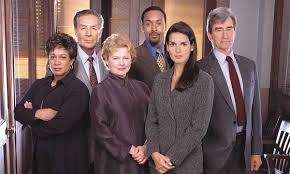
Well-oiled machines are great, except when they’re TV shows. The best of scripted TV has a human touch, a sense of the risks and variations and flourishes that come with inspiration. This season, the “Law & Order” scripts seem like they’ve been auto-written by a computer program, the same program that was writing them back when the show had already hit a creative wall back in 2010 after 450 something episodes.
I don’t think it’s the cast, including newcomers Camryn Manheim and Jeffrey Donovan and returnees Anthony Anderson and Sam Waterston. They’re given very little character development. They’re also given story lines, some of them feebly ripped from the headlines, that are half-baked at best. Watching this new season, I keep finishing episodes and wondering, “Is that it?” There is very little there, when the denouement rolls around; the writers aren’t sneaking in any of the twists that left you thinking a bit about the justice system, or human nature. There’s almost none of the wit from the show’s prime, too, when the cops’ and lawyers’ little sharp asides added both irony — something many of the spinoffs, notably “SVU,” do not have — and bits of character.
Mouse Whisper
“Oh, my dear, relations are like drugs, – useful sometimes, and even pleasant, if taken in small quantities and seldom, but dreadfully pernicious on the whole, and the truly wise avoid them.”
From Elizabeth and her German Garden. Never thought about relatives that way, they always seemed so “mice”.

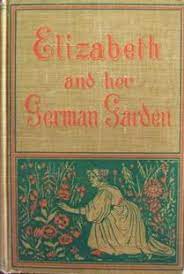
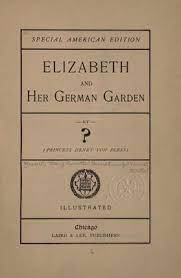

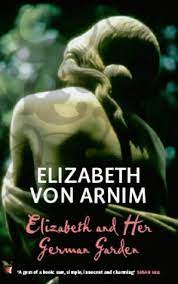

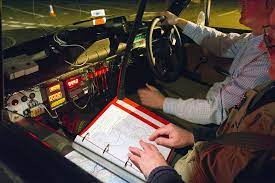
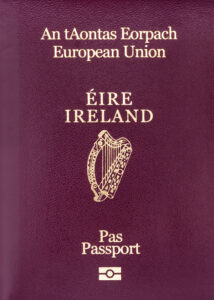 I have Irish ancestry; in fact, since my grandfather was born in Ireland, I am eligible for Irish citizenship. I looked at what is involved some years ago and said why would I do that at my age? I am Australian; I do not need a dual nationality, irrespective of what ephemeral advantages that might bring, such as the national anthem. The Irish national anthem is one forged by fire in 1911; Australia’s doggerel was composed for a concert of the Highland Society of New South Wales in 1878.
I have Irish ancestry; in fact, since my grandfather was born in Ireland, I am eligible for Irish citizenship. I looked at what is involved some years ago and said why would I do that at my age? I am Australian; I do not need a dual nationality, irrespective of what ephemeral advantages that might bring, such as the national anthem. The Irish national anthem is one forged by fire in 1911; Australia’s doggerel was composed for a concert of the Highland Society of New South Wales in 1878.